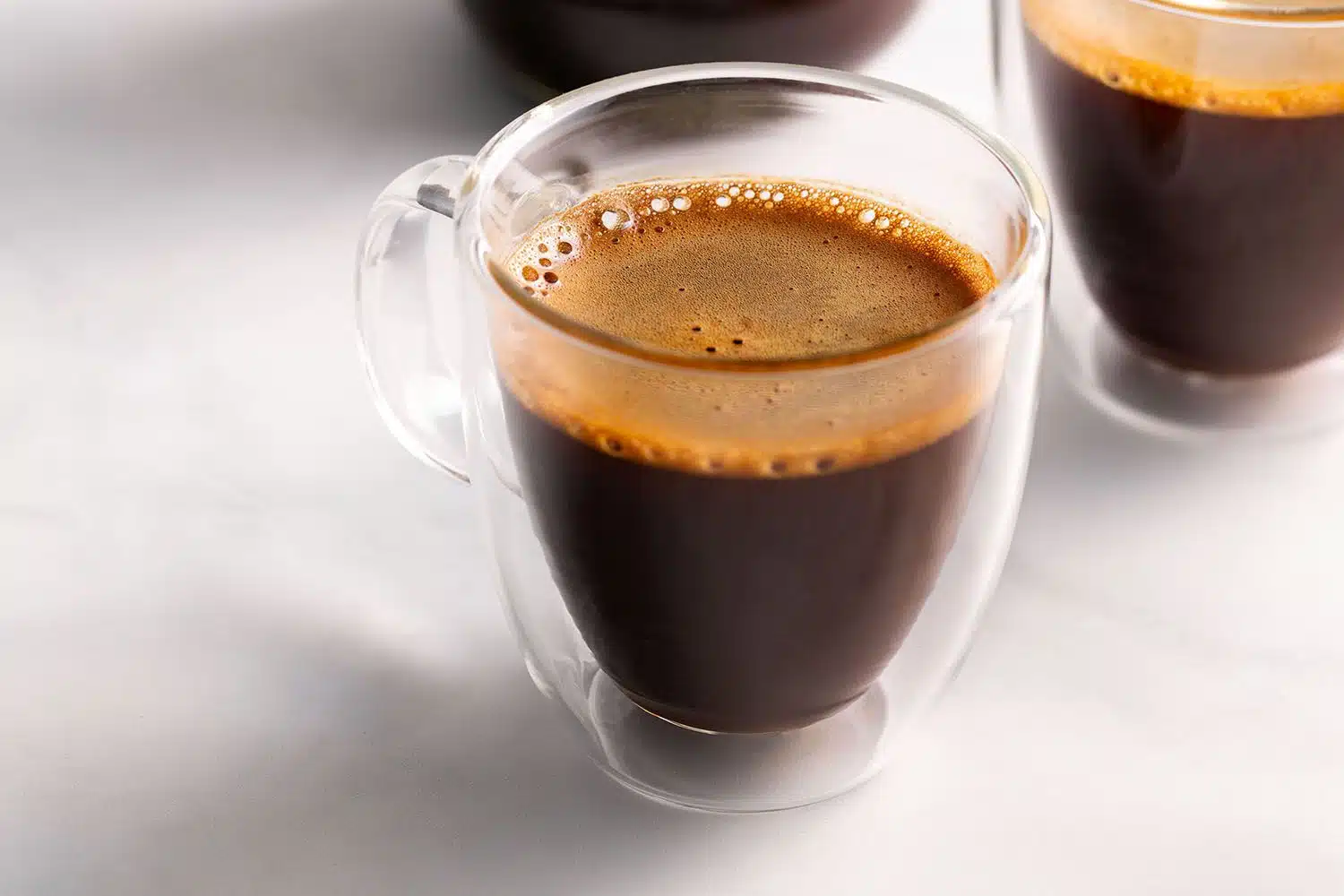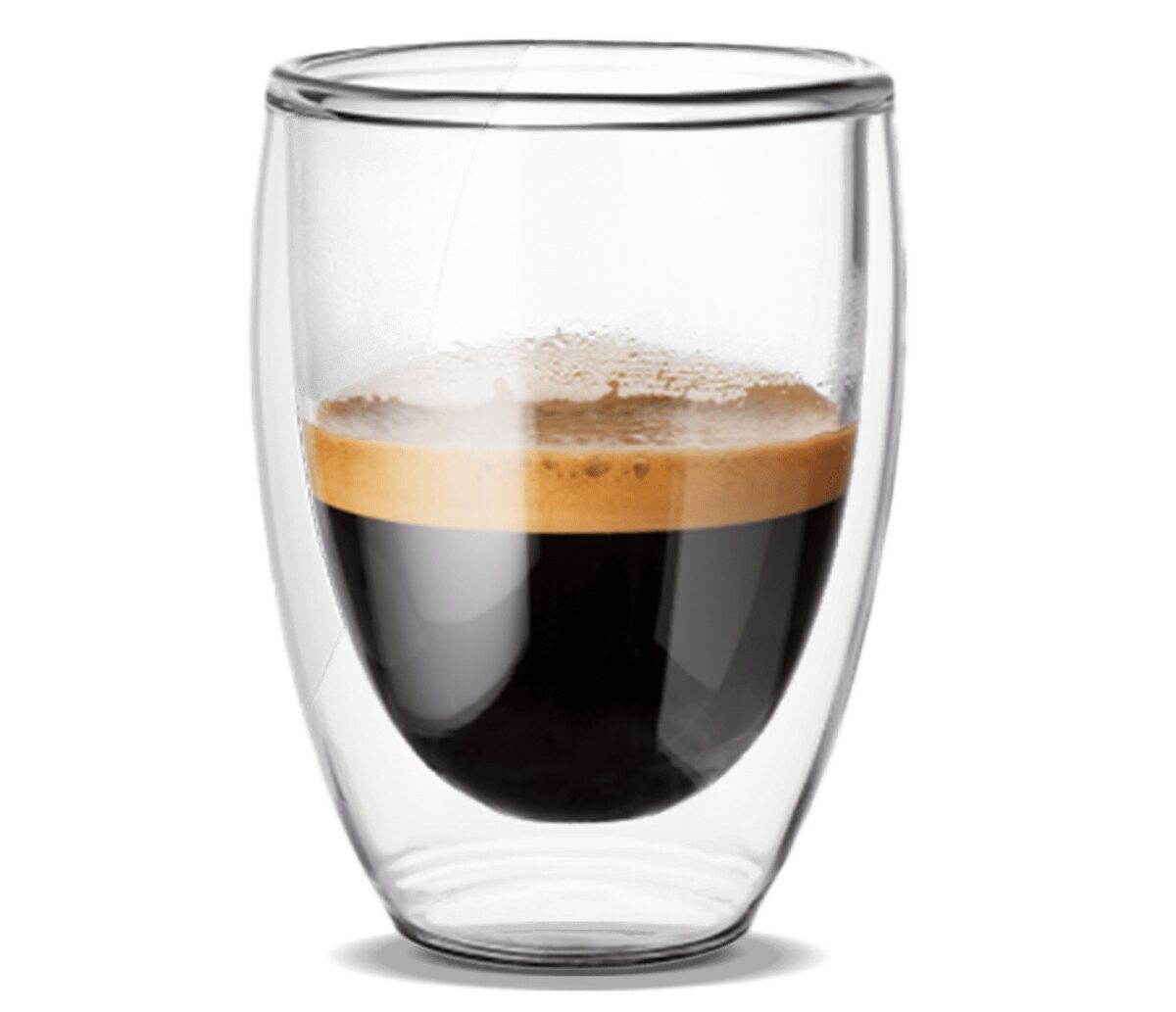Making a good espresso is an art that combines precision and passion, yet many coffee enthusiasts find the process overwhelming. In this guide, we aim to simplify the essential steps that lead to a delightful cup of espresso, from selecting the right beans to perfecting your brewing technique. Each factor plays a vital role, and understanding these elements can elevate your coffee experience. Whether you’re a novice or looking to refine your skills, let’s explore the journey to crafting a truly good espresso together.
Understanding Espresso: A Brief Overview
Espresso serves as a foundation for many popular coffee drinks, such as cappuccinos and lattes. At its core, good espresso is a concentrated coffee beverage brewed by forcing hot water through finely-ground coffee. This process creates a rich, bold flavor profile characterized by its thick crema, which adds both texture and depth to the experience.
Key Characteristics of Good Espresso:
- Concentration: Unlike regular brewed coffee, espresso extracts flavors more intensely due to its brewing method.
- Crema: A golden, frothy layer that sits atop a well-prepared shot of espresso, indicating freshness and quality.
- Flavor Profile: Good espresso often exhibits a balance of sweetness, acidity, and bitterness.
The Espresso Process
- Grinding: The beans must be ground finely to optimize extraction. A uniform grind ensures even flavor.
- Tamping: Proper tamping is crucial to create resistance in the coffee puck, allowing for a structured flow of water.
- Brewing: Water at the right temperature and pressure extracts the essence of the coffee.
In summary, understanding what makes a good espresso involves recognizing these essential components. With careful attention to detail, one can truly appreciate the complexity, aroma, and flavor of this beloved beverage. As you venture into crafting espresso, you will find that each step contributes to the ultimate goal: a delightful cup of good espresso.

Choosing the Right Coffee Beans
Selecting the right coffee beans is crucial in your quest for a good espresso. The coffee bean variety, origin, and processing method all significantly impact the final flavor and aroma. Here are key points to consider when choosing your beans:
- Bean Varieties: Arabica and Robusta are the main types of beans.
- Arabica: Known for its smooth, complex flavors. Typically, a preferred choice for a good espresso.
- Robusta: Offers a stronger and more bitter profile, with higher caffeine content.
- Origin Matters: Different regions produce beans with distinct flavor profiles. Consider:
- Ethiopian beans: Often fruit-forward with floral notes.
- Brazilian beans: Usually nutty and sweet, great for a balanced espresso.
- Colombian beans: Typically well-rounded and smooth.
- Processing Methods: The way beans are processed affects their taste. Key methods include:
- Washed Processing: Produces a cleaner taste, highlighting the bean’s natural flavors.
- Natural Processing: Results in a fruity and bold espresso.
Comparison Table of Bean Varieties
| Bean Type | Flavor Profile | Caffeine Content |
|---|---|---|
| Arabica | Smooth, complex, sweet | Lower |
| Robusta | Strong, bitter, earthy | Higher |
By investing time in selecting the right coffee beans, you significantly enhance your chances of achieving that delightful good espresso every time.
The Importance of Grind Size
When it comes to brewing a good espresso, grind size plays a pivotal role in the taste and quality of the final product. A precise grind allows for optimal extraction, ensuring you get the rich flavors that define a good espresso. Here are some key points to consider:
- Coarse vs. Fine Grind: The grind size should be fine, resembling granulated sugar. A coarser grind may lead to under-extraction, resulting in a sour taste, while a finer grind might cause over-extraction, leading to bitterness.
- Consistency Matters: It’s crucial to achieve a uniform grind. Inconsistent particles can yield uneven extraction. Investing in a good burr grinder can help you achieve a consistent grind size, which is vital for making a good espresso.
- Experimentation is Key: Feel free to adjust your grind size based on the beans you use and your taste preference. A slight change can impact the richness and crema of your espresso.
Here’s a quick reference table to illustrate how grind size affects extraction time and flavor:
| Grind Size | Extraction Time | Flavor Profile |
|---|---|---|
| Coarse | Too long | Sour |
| Medium | Ideal | Balanced |
| Fine | Too short | Bitter |
In summary, achieving the right grind size is essential for pulling a good espresso. Remember, precision and consistency result in that perfect cup every time.
Measuring Coffee and Water
Getting the right balance of coffee and water is crucial for crafting a good espresso. The precise measurements not only influence the flavor but also affect the crema, body, and aroma of your shot. Here’s a simple way to ensure you achieve that perfect balance:
- Coffee-to-Water Ratio: A common starting point is using a ratio of 1:2. This means for every gram of coffee, you should use about two grams of water. For example:
- 18 grams of coffee = 36 grams of water (producing roughly a double shot).
- Consistency is Key: Always use a scale to measure both coffee and water. This practice helps maintain consistency from one brew to the next. Small deviations in measurement can lead to significant changes in taste.
- Adjust to Taste: While the 1:2 ratio is a good guideline, feel free to tweak it based on your preferences. You can try:
- Increasing coffee to enhance boldness (e.g., 1:1.5).
- Decreasing coffee for a milder cup (e.g., 1:2.5).
- Water Quality: Don’t overlook this aspect. Use filtered water for the best results, as it can impact the flavor of your good espresso.
By thoughtfully measuring your coffee and water, you pave the way for a consistently satisfying and flavorful outcome.

Selecting the Right Espresso Machine
Choosing the perfect espresso machine plays a crucial role in your quest for a good espresso. With numerous options available, it can feel overwhelming at times. However, understanding your needs can simplify the decision-making process. Here are key factors to consider when selecting the right espresso machine:
- Type of Machine:
- Manual: Offers full control over the brewing process; ideal for enthusiasts.
- Semi-Automatic: A good balance of control and convenience; great for beginners.
- Automatic: Provides consistency with less effort; perfect for busy individuals.
- Super-Automatic: Delivers one-touch brewing convenience; suitable for those who value simplicity.
- Budget:
- Identify how much you are willing to invest. Good espresso can be achieved across a range of price points. Still, be cautious of very cheap options, as they might compromise quality.
- Size and Capacity:
- Choose a machine that fits your kitchen counter and meets your brewing needs. For instance, a compact machine works well for single servings, while larger ones cater to multiple cups.
- Features:
- Look for thermoblock heating systems, built-in grinders, or milk frothers. These can enhance your coffee-making experience.
Ultimately, selecting the right espresso machine can significantly affect your ability to produce a good espresso that you will enjoy. Make sure to align your choice with your personal preferences and daily routine.
Tamping Fundamentals: How to Do It Right
Tamping plays a crucial role in brewing a good espresso. It ensures an even extraction by compressing the coffee grounds uniformly. Well-executed tamping can significantly improve the flavor and consistency of your espresso. Here are some fundamental tips to consider:
- Even Surface: Always aim for a flat and even coffee surface. This promotes uniform water flow, preventing channeling.
- Pressure: Apply consistent pressure while tamping. A common guideline is to use approximately 30 pounds of force. You might use a scale or gauge to check your technique if you’re unsure.
- Tamping Technique:
- Hold the tamper like a door handle, using your palm for more control.
- Apply downward pressure, and twist slightly at the end to polish the surface.
- Check for Levelness: After tamping, ensure your grounds remain level. An uneven puck can lead to uneven extraction and a less desirable taste.
Tips to Remember:
- Use a clean tamper that fits well in your portafilter.
- Practice makes perfect! Start with practice shots to refine your tamping routine.
In summary, good espresso begins with proper tamping. By focusing on these fundamentals, you can create a more balanced and flavorful shot.
Brewing Temperature and Pressure
Achieving a good espresso relies significantly on the brewing temperature and pressure. These factors play a crucial role in extracting the best flavors from your coffee. Here’s a brief overview of their importance:
- Brewing Temperature:
- Ideal range: 90°C to 96°C (194°F to 205°F)
- Too high: Over-extraction occurs, leading to bitterness.
- Too low: Under-extraction happens, resulting in sour taste.
- Brewing Pressure:
- Standard pressure: 9 bars (130 psi)
- Insufficient pressure: Causes weak flavor and watery texture.
- Excessive pressure: Risks over-extraction and bitterness.
To illustrate, here’s a simplified comparison:
| Condition | Ideal Espresso | Under-extracted | Over-extracted |
|---|---|---|---|
| Temperature (°C) | 90°C to 96°C | Below 90°C | Above 96°C |
| Pressure (bars) | 9 bars | Below 8 bars | Above 10 bars |
| Flavor Profile | Balanced and rich | Sour and weak | Bitter and harsh |
In summary, to make a good espresso, maintain the right temperature and pressure. Crafting that perfect shot is all about finding balance, so don’t hesitate to make adjustments based on your equipment and beans. Enjoy the process!

Timing Your Extraction
Timing plays a crucial role in brewing a good espresso. The extraction time affects the flavor, strength, and overall quality of your shot. Ideally, you should aim for an extraction time of 25 to 30 seconds.
Here’s a simple guide to help you determine the optimal timing for your espresso:
- Pre-infusion time: A brief pause (2-5 seconds) after applying pressure can help saturate the coffee grounds, enhancing the flavor.
- Extraction time: Aim for a total of 25-30 seconds once you start pulling the shot. You may adjust slightly based on your taste preferences.
- Shot volume: A single shot typically yields about 1 ounce, while a double shot yields around 2 ounces. Keep this in mind for proper timing.
Comparison of Extraction Times
| Extraction Time | Flavor Profile | Common Issues |
|---|---|---|
| Under 25 seconds | Sour, watery | Insufficient extraction |
| 25-30 seconds | Balanced, rich | Ideal for a good espresso |
| Over 30 seconds | Bitter, over-extracted | Can lead to unpleasant tastes |
By monitoring your extraction time, you can ensure you are on the right path to achieving a good espresso. Remember, fine-tuning your timing and adjusting based on your machine and coffee beans can significantly impact your espresso experience. Happy brewing!
Common Mistakes to Avoid
When it comes to crafting a good espresso, avoiding common pitfalls can significantly enhance your brewing experience. Here are a few missteps to steer clear of:
- Using Old Coffee Beans: Freshness matters. Stale beans lead to flat flavors. Always use beans roasted within the last few weeks for a good espresso.
- Incorrect Grind Size: A grind that’s too coarse can result in watery espresso, while one that’s too fine may cause over-extraction. Aim for a fine, consistent grind.
- Improper Tamping: Avoid uneven tamping. An inconsistent surface during tamping disrupts water flow, leading to an uneven extraction. Aim for around 30 pounds of pressure.
- Ignoring Brewing Temperature: The ideal brewing temperature for a good espresso is typically between 195°F to 205°F. Too hot or too cold can spoil the taste.
- Environmental Factors: Temperature and humidity can affect your grind and extraction. Always adjust your technique according to the environment to maintain consistency.
- Inadequate Cleaning: Residue buildup in the espresso machine can taint flavors. Regular cleaning ensures your machine operates optimally and your espresso tastes fresh.
By avoiding these common mistakes, you can consistently create a good espresso, elevating your coffee experience. Experimenting and refining your technique gradually helps you find what best suits your taste.
Exploring Different Espresso Recipes
Crafting a good espresso goes beyond just mastering the basics; it opens the door to a world of delightful recipes that you can experiment with. Here are a few variations worth exploring:
- Espresso Macchiato:
- Ingredients: 1 shot of espresso, a small amount of steamed milk
- Flavor Profile: Strong and bold, with a touch of creaminess.
- Cappuccino:
- Ingredients: 1 shot of espresso, equal parts steamed milk, and milk foam
- Flavor Profile: Well-balanced, creamy, and rich.
- Americano:
- Ingredients: 1 shot of espresso, hot water
- Flavor Profile: Milder than straight espresso, yet retains its rich essence.
- Affogato:
- Ingredients: 1 shot of espresso, a scoop of vanilla ice cream
- Flavor Profile: A delightful combination of hot and cold, bitter and sweet.
- Flat White:
- Ingredients: 1-2 shots of espresso, microfoam
- Flavor Profile: Smooth and velvety, perfect for those who enjoy creamy beverages.
When experimenting with these recipes, remember that the foundation of a good espresso lies in the choice of coffee beans and the precision of your brew. Aim for consistency in your technique, as it directly influences the flavor of your espresso creations. Exploring different recipes can enhance your appreciation for this beloved beverage and elevate your coffee experience. So, don’t hesitate to try out these delightful variations!
Final Thoughts on Crafting the Perfect Espresso
Crafting a good espresso is both an art and a science, and it truly requires patience and practice. While each step from selecting beans to timing your extraction plays a significant role, the beauty lies in how they come together to create that delightful cup. Here are some key takeaways to consider:
- Experimentation is Essential: Personal preferences vary, and what constitutes a good espresso for one may differ for another. Don’t hesitate to explore different beans, grind sizes, and extraction times.
- Consistency Matters: Aim for consistency in your process. Use the same coffee weight, water temperature, and brew time to ensure your espresso tastes great every time.
- Don’t Rush the Process: Quality takes time. Allow yourself the opportunity to learn, and understand the nuances that can elevate your espresso from good to exceptional.
- Documentation is Key: Keep track of your brewing parameters and outcomes. This practice helps you identify what works best for you, ensuring that each good espresso is not just a happy accident.
Remember, making a good espresso is about finding joy in the process as much as the final result. Embrace the learning journey, and you’ll gradually hone your skills to craft a truly remarkable espresso experience.
Frequently Asked Questions
What kind of coffee beans should I use for making espresso?
For a good espresso, it is generally recommended to use high-quality coffee beans, preferably Arabica variety, as they tend to offer a more balanced flavor profile with natural sweetness. Freshness is also key; using beans roasted within the last two weeks is often suggested to ensure optimal flavor extraction. Additionally, a medium to dark roast can provide the robust flavors typically desired in espresso.
How fine should the coffee grind be for espresso?
The grind size for espresso should generally be quite fine, resembling the texture of granulated sugar. This fine grind helps create a higher resistance when water flows through the coffee, resulting in a more concentrated and rich extraction. However, the ideal grind can vary based on your espresso machine and specific beans, so some experimentation may be necessary to achieve the perfect extraction.
What temperature should the water be for brewing espresso?
The ideal water temperature for brewing espresso is typically between 190°F to 205°F (88°C to 96°C). Water that is too hot can lead to over-extraction, resulting in a bitter taste, while water that is too cool may under-extract, leading to a sour flavor. Using a thermometer or an espresso machine with temperature control can help in maintaining the right temperature for brewing.
How long should I brew my espresso?
A good espresso shot usually takes about 25 to 30 seconds to brew. This time frame allows for the proper extraction of flavors and oils from the coffee grounds. If the brewing process takes too long, it can result in over-extraction, while too short a duration may lead to under-extraction. It’s often helpful to pay attention to the espresso’s color and consistency during the extraction process.
What equipment do I need to make a good espresso at home?
To make a good espresso at home, you will need a few essential pieces of equipment, including an espresso machine, a burr grinder for uniform coffee grounds, and a tamper to compress the coffee grounds evenly in the portafilter. Additionally, having fresh, high-quality espresso coffee beans is crucial. Some may also find a milk frother useful if they enjoy creating drinks like lattes or cappuccinos.


